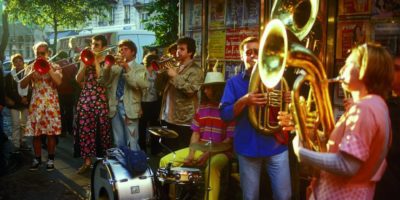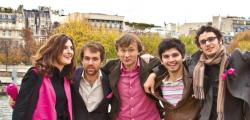
Minister-president Jan de Quay (KVP) photo by Harry Pot – Wikimedia commons
Top 10 Little Known Facts about Jan de Quay
Politics is a category of activities that are related to group decision-making or other types of power dynamics between people, such as the allocation of resources or status.
Political science is the name of the area of social science that focuses on politics and governance. Many people have entered politics for a variety of reasons.
Some have continued to be prominent in their political endeavours, leaving behind notable accomplishments throughout their entire political career.
Jan Eduard de Quay is one such well-known politician. He was born on August 26, 1901 in ‘s-Hertogenbosch, North Brabant as Jan Eduard de Quay. His nickname was Quay Jan Eduard de.
He was a member of the former Catholic People’s Party, which is now known as the Christian Democratic Appeal party.
Jan de Quay died on Thursday 4 July 1985 at 83 years old at his home in Beers in the southern part of the Netherlands. Here are the top 10 little-known facts about him.
1. De Quay studied Applied psychology and Literature

Utrecht University in the Leuvenlaan 19 in Utrecht in the Netherlands photo by Antoine – Wikimedia commons
De Quay earned a Master of Psychology and Letters in Applied Psychology from Utrecht University. He then pursued further study in Clinical Psychology at Stanford University and earned a Master of Social Science.
Utrecht University is a public research university in Utrecht, Netherlands. Established on 26 March 1636 (386 years ago), it is one of the oldest universities in the Netherlands.
2. He was an associate professor and researcher at the University of Tilburg

Tilburg University (the Netherlands) photo by Ron Maijen – Wikimedia commons
At Stanford University, he obtained a Master’s degree in Social Science and worked as a researcher and associate professor of Applied psychology at the University of Tilburg from September 1927 until August 1939 before finishing his thesis at his alma.
He went on to graduate with a Doctor of Psychology in Applied psychology and worked as a professor of Applied psychology, business administration and business theory at the University of Tilburg from March 1933 until August 1939.
De Quay also served as Rector Magnificus of the University from January 1938 until January 1939.
3. De Quay married Maria van der Lande

Madurodam opened by Mrs M. H. W. De Quay-van der Lande photo by Jack de Nijs – Wikimedia commons
On 8 August 1927, De Quay married Maria van der Lande. He has nine children including five sons and four daughters.
4. He was co-founder of the controversial Dutch Union
During World War II De Quay was co-founder of the controversial Dutch Union in July 1940 but the organization was disbanded by the German occupation authority in December 1941.
The Netherlands Union was a short-lived political movement active in the German-occupied Netherlands in World War II.
In its brief period of activity between July 1940 and May 1941, up to 800,000 Dutch people became members, which was about a tenth of the population at the time. It represented the largest political movement in the history of the Netherlands.
Only a few weeks had passed since the German invasion of the Netherlands had been completed when the Union was established on July 24, 1940.
It was devised by Dr Louis Einthoven, a former Rotterdam police chief, Johannes Linthorst Homan, a former Groningen queen’s commissioner, and Professor Jan de Quay, a former member of the Catholic State Party.
5. He was nominated as the next Queen’s Commissioner of North Brabant

Prof. Dr J.E. de Quay, minister van Oorlog.*1945 photo sourced from Wikimedia commons
De Quay was not included in the new cabinet following a cabinet formation. De Quay remained politically active and was nominated in September 1946 as the next Queen’s Commissioner of North Brabant, assuming office on November 1, 1946.
In the Netherlands, the King’s commissioner is the governor of a province. The officeholder presides over both the States Provincial (directly elected provincial legislature) and the Provincial Executive (executive branch), but only the latter has the power to vote.
When the reigning queen is a woman, the position is referred to as the Queen’s commissioner. There are twelve King’s commissioners in the Netherlands since there are twelve provinces.
6. Jan led the first cabinet to complete a full term after WWII
He holds the distinction of leading the first cabinet to finish a full term after World War II, and his premiership is regularly evaluated as ordinary by both experts and the public.
7. He was appointed as Minister of War in the Cabinet Gerbrandy III
De Quay was named Minister of War in the Cabinet Gerbrandy III, the last government-in-exile, which took office on April 4, 1945. De Quay was not included in the new cabinet after it was formed.
The Third Gerbrandy cabinet also called the Fourth London cabinet was the Dutch government-in-exile from 23 February 1945 until 25 June 1945.
The cabinet was formed by the political parties Roman Catholic State Party (RKSP), Anti-Revolutionary Party (ARP) and the Free-thinking Democratic League (VDB) following the resignation of the Second Gerbrandy cabinet on 27 January 1945.
The national unity government (War cabinet) was the last of four war cabinets of the government-in-exile in London during World War II.
8. Jan served as Prime Minister of the Netherlands

House of Representatives, Ministers, Prime Ministers, Quay, Jan de, Item no. 092 photo by Eric Koch – Wikimedia commons
He was the Netherlands’ prime minister. De Quay was convinced to head a new ministry after the 1959 elections.
After assembling a successful cabinet, De Quay established the Cabinet De Quay and assumed the position of the prime minister of the Netherlands on May 19, 1959.
De Quay said he wouldn’t run for office or serve another term as prime minister before the 1963 election. Following the introduction of the Cabinet Marijnen on July 24, 1963, De Quay resigned from his position.
9. He served as a Member of the Senate
From 25 June 1963 to 22 November 1966, he was a member of the Senate. From 22 November 1966 to 5 April 1967, while in Cabinet Zijlstra, he held the positions of Deputy Prime Minister and Minister of Transport, Public Works, and Water Management.
He returned to the Senate on June 13, 1967, and served there until September 16, 1969.
10. De Quay retired from active politics at 68
De Quay left active politics at the age of 68 and went on to work in the private and public sectors as a business and non-profit director, as well as serving on many state commissions and councils on behalf of the government.
De Quay withdrew from public life and lived in retirement until his death in July 1985 at the age of 83.
Planning a trip to Paris ? Get ready !
These are Amazon’s best-selling travel products that you may need for coming to Paris.
Bookstore
- The best travel book : Rick Steves – Paris 2023 – Learn more here
- Fodor’s Paris 2024 – Learn more here
Travel Gear
- Venture Pal Lightweight Backpack – Learn more here
- Samsonite Winfield 2 28″ Luggage – Learn more here
- Swig Savvy’s Stainless Steel Insulated Water Bottle – Learn more here
Check Amazon’s best-seller list for the most popular travel accessories. We sometimes read this list just to find out what new travel products people are buying.













